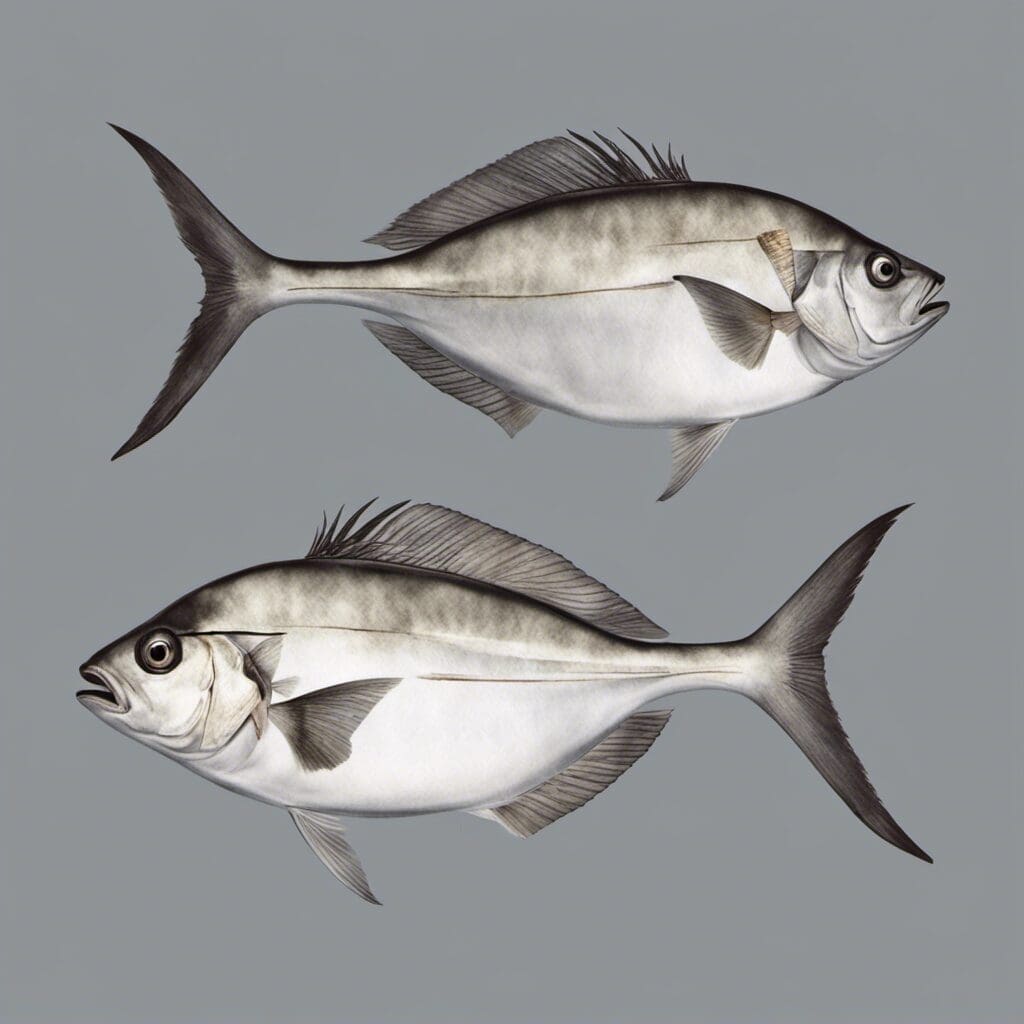Introduction
Pompano, scientifically known as Trachinotus ovatus, is a member of the Carangidae family. This fish species is highly regarded by anglers and culinary enthusiasts due to its taste as well as game quality.
Conservation Status
As of today, the Pompano species is classified as ‘Least Concern’ according to the World Conservation Union. Efforts are being made to maintain this status through responsible fishing practices and regulations of commercial fisheries.
Statistics
| Stat | Average | Range |
|---|---|---|
| Length | 18 inches | 8 – 25 inches |
| Weight | 2 – 3 pounds | 1 – 8 pounds |
| Average Lifespan | 3 – 5 years |
Distribution
Pompano are primarily found in warmer waters of the Western Atlantic Ocean, ranging from Massachusetts to Brazil. There is seasonal movement towards warmer waters during winter months.
Habitats
This species prefers a water temperature between 68 – 82 °F and typically found at depths of 20 – 30 feet offshore. They are highly adaptable, found in a variety of habitats ranging from bridges, piers, marshes, and along the shoreline.
When and Where to See
Pompano can be seen year-round, but they typically come closer to shore during spring and fall. They are most active during the early morning and late afternoon.
Best Fishing Locations
Here are some prominent Pompano fishing spots:
- Panama City Beach, Florida
- Daytona Beach, Florida
- Surfside Beach, Texas
- Outer Banks, North Carolina
- Padre Island, Texas
How to Catch
Pompano are typically caught with live or fresh dead shrimp, sand fleas, or small crabs. Techniques such as surf fishing, fly fishing, and bottom fishing are all effective. The best time to catch them is early morning or late afternoon.
Identification Guide
Featuring a deep, compressed body with a forked tail and long, pointed pectoral fins, Pompanos are easily identifiable. They are bright silver in color, with a yellow belly.
Culinary
Pompano’s mild and sweet flavor makes it a favorite among chefs. Its high-fat content makes it perfect for grilling or broiling. This fish provides a good source of protein as well as vital minerals and vitamins.
Additional Information
Pompano primarily feed on small crustaceans and mollusks. Their natural predators include larger species of fish and birds. Overfishing is a significant human-induced threat to Pompano.
References and Further Reading
1. Froese, R. and D. Pauly. (2021). FishBase. Trachinotus ovatus. [Button link](https://fishbase.se/summary/Trachinotus-ovatus.html)
2. Smithsonian Tropical Research Institute. (2021). Shorefishes. Trachinotus ovatus. [Button link](https://biogeodb.stri.si.edu/caribbean/es/thefishes/species/3567)
3. Florida Museum. (2021). Florida Pompano. [Button link](https://www.floridamuseum.ufl.edu/discover-fish/species-profiles/trachinotus-carolinus/)
Always be sure to fact-check information against credible sources

